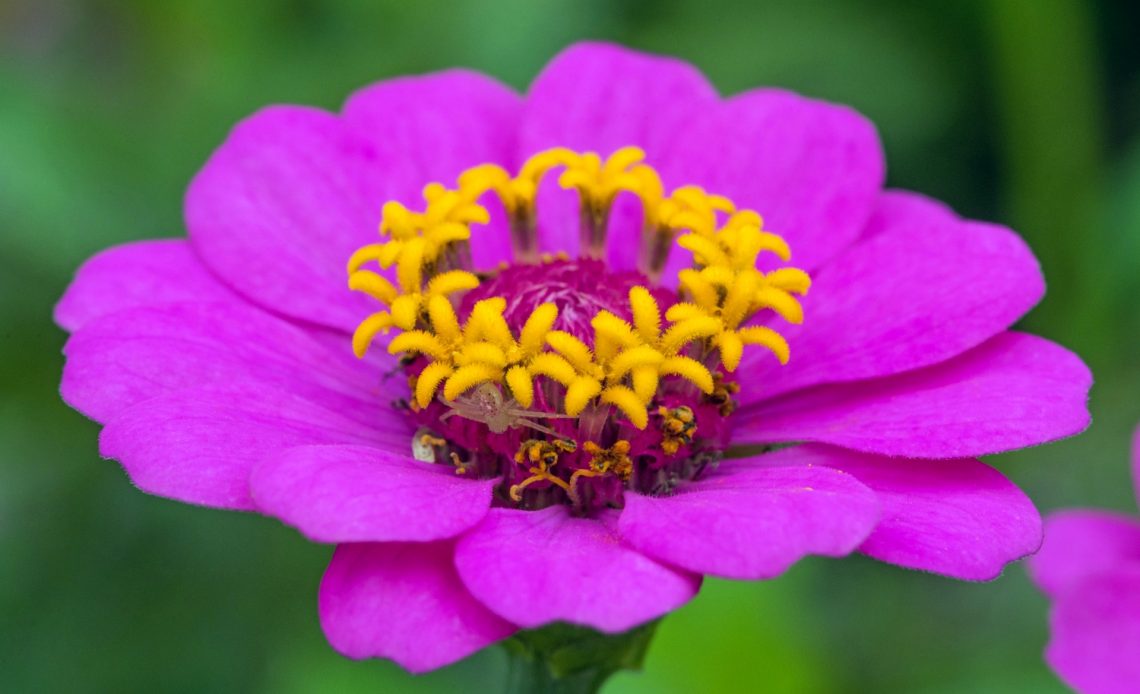

We’re here to help! Wild Yards is a completely free website that is 100% dedicated to helping you create a wildlife-friendly, sustainable yard. Read more
WildYards is reader-supported. When you buy a product through a link on our site, we may earn a comission. Every product is independently selected by our (obsessive) editors and our reviews are unbiased and objective. Read more about our mission or our privacy policy.
Companion planting is a valuable strategy, not just for vegetable gardens and raised beds, but also for backyard landscaping. Growing the right plants together allows you to utilize a given space more efficiently. It also enables you to attract beneficial insects, while also repelling the bad ones. Because zinnias are so easy to grow, they make great companion plants. But what are the best zinnia companion plants, and which plants should you avoid growing near zinnias?
Tomatoes, cucumbers, asparagus, and peppers are just a few garden favorites that grow well with zinnias. Ornamental plants can also be grown as zinnia companion plants, including dahlias, marigolds, and salvias, however, herbs that prefer to grow in dry, sandy soils, like lavender, should be avoided.
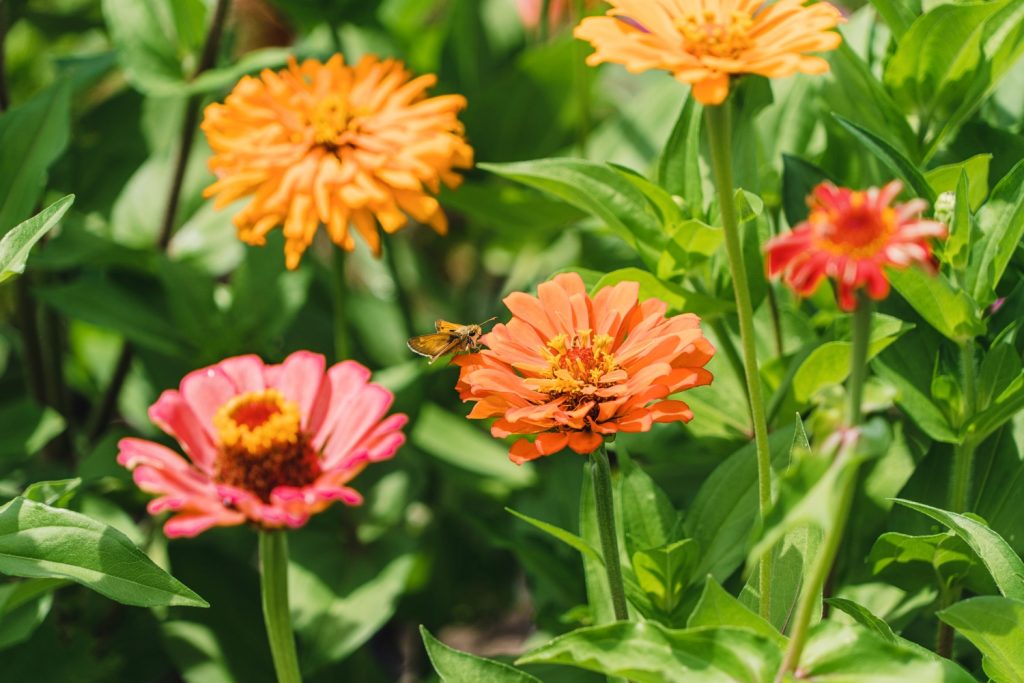
What are the best zinnia companion plants?
Zinnias are easy to grow and bloom for long periods, making them highly attractive to bees, butterflies, hummingbirds, and other beneficial pollinators. These flowers grow best when planted in slightly acidic to neutral soil that’s full of moisture-retaining organic matter but still drains well. While zinnias are tolerant of partial afternoon shade in warmer growing regions, these flowers need to be planted in full sun in cooler climates.
Zinnias are some of the best companion plants out there, and not just for your vegetable patch, but for the flowers in your landscaping, too. Let’s take a look at 13 of the best zinnia companion plants for your backyard.
Basil
One of the main reasons why zinnias and basil work so well together is because these two plants share the same growing requirements. Both basil and zinnias are happy to grow in full sun and in moist (but not soggy) soils. So they’re often grown together because of that alone.
Of course, basil makes a great zinnia companion plant for other reasons. For starters, its pungent odor helps repel damaging insects, keeping zinnias and surrounding plants safe from infestation. Plus, basil’s sweetly fragrant flowers work with zinnia’s vibrant blooms to attract hoverflies, parasitic wasps, and other predatory insects that not only support pollination but also prey on harmful bugs.
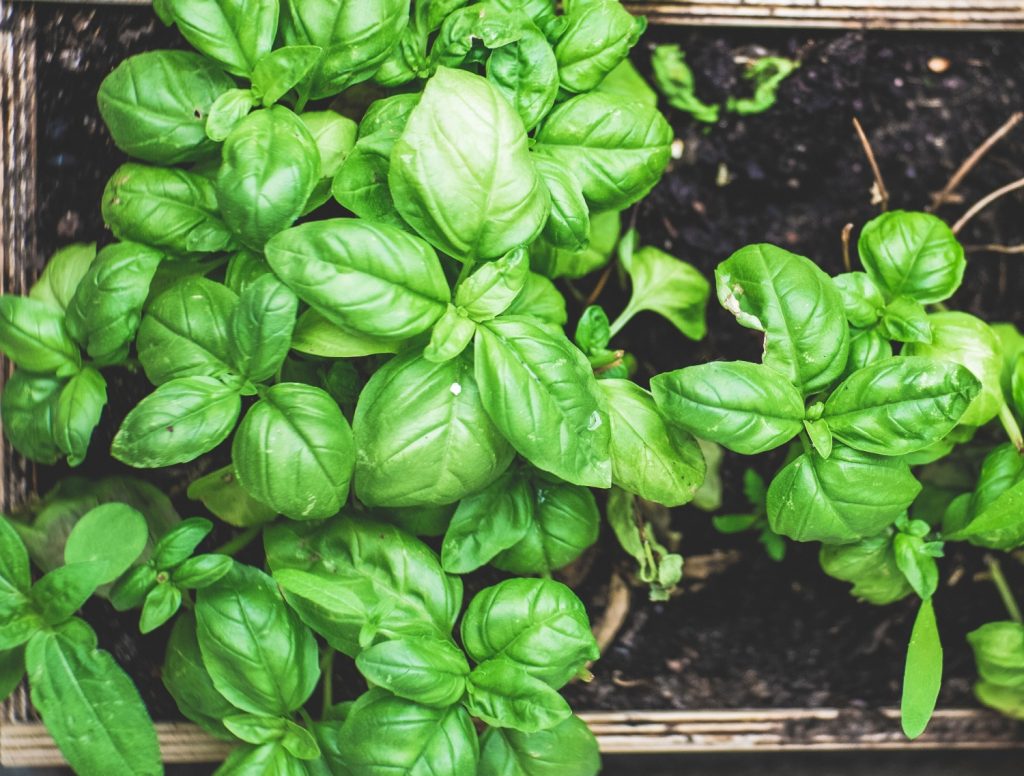
Cauliflower
Zinnias are tolerant of cauliflower’s growing requirements, which are very similar to its own. Using zinnias to fill in the gaps between your cauliflower plants helps keep the soil below in the shade. This allows the zinnias to act as a living mulch, preventing rapid evaporation and keeping the ground cool so cauliflowers can grow well.
You can also plant zinnias near your cauliflower plants to act as a trap crop. Many of the insects that feed on cauliflowers, including aphids, loopers, beetles, slugs, and snails, will eat zinnias, instead, if they’re available. So growing rows of zinnias in between rows of cauliflower is an excellent way to offer these cruciferous veggies some protection.
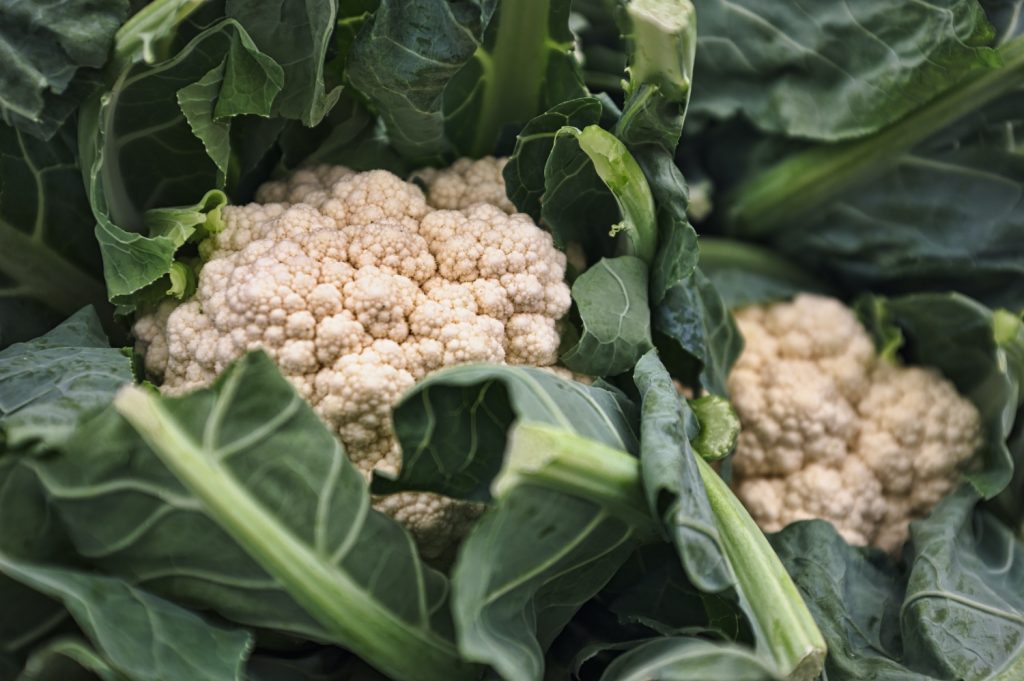
Salvias
Culinary sage and ornamental sage, often called salvia, both work well as zinnia companions. Zinnias and sage are both tolerant of full sun, so they’re perfect for planting in the hottest parts of your garden, where many plants can’t survive.
Like zinnias, salvias are easy to grow, and they’re very popular with pollinators. Just be sure to space salvias and zinnias far enough apart to allow for adequate air circulation. This helps prevent fungal infections and other salvia problems. And, as is the case with zinnias, regular deadheading can help salvias continue blooming longer, supporting pollination in your garden throughout the growing season.
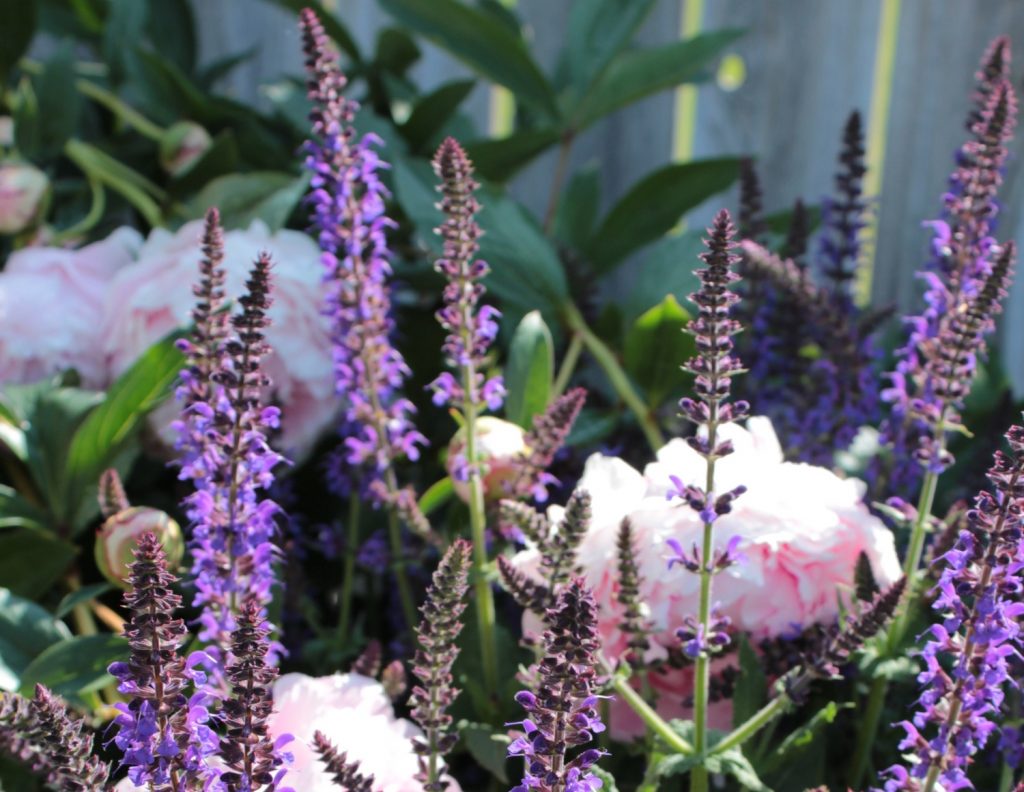
Cucumbers
Like cucumbers, zinnias grow best in full sun and prefer to be planted in loamy soil that can be kept moist but won’t stay sopping wet. Zinnias benefit cucumbers by attracting pollinators needed to support crop production. These flowers also attract ladybugs and lacewings, which feed on many of the pests that are drawn to cucumbers.
Because cucumbers are vining plants, they may smother neighboring crops if they aren’t given something to latch onto. So to keep your zinnias in good shape, train your cucumbers to grow up a trellis. And be sure to space the plants far enough apart to promote air circulation, so your cucumbers don’t develop powdery mildew.
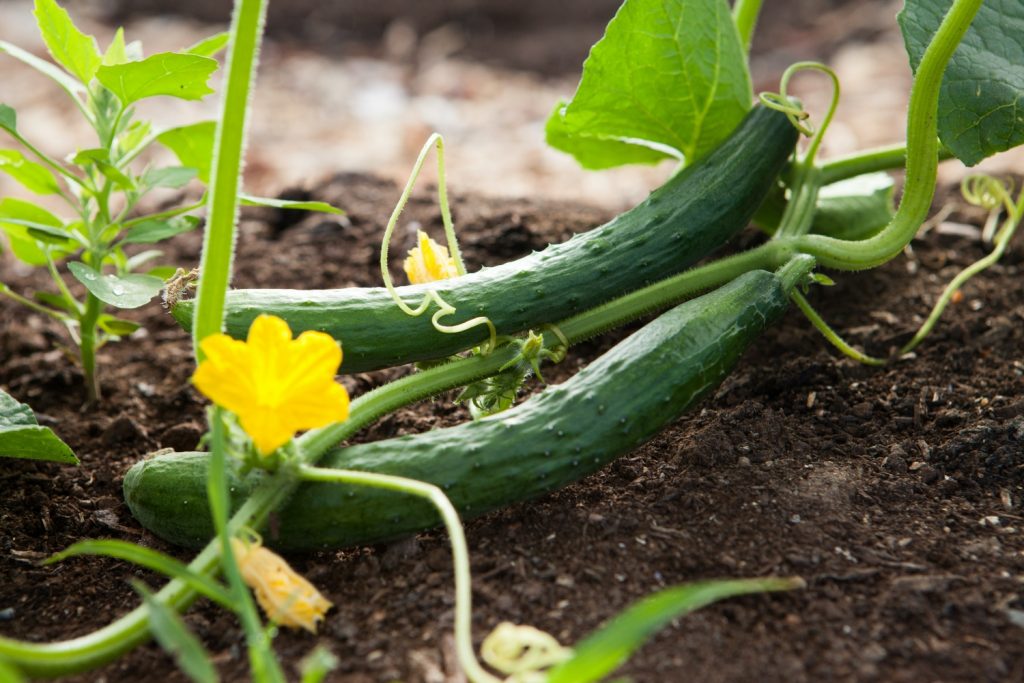
Melons
Watermelons, cantaloupes, and honeydew melons also benefit from being planted near zinnias. All of these plants get along great because they can tolerate full sun, and prefer to grow in loose, moist soil. Zinnias keep pesky bugs, like aphids and thrips, off melons, while their bright flowers attract good insects that aid in pollination.
As with cucumbers, melons should also be trained to grow up a trellis if you choose to use zinnias as companion plants for them. This is especially necessary for melons that are being grown in pots or other small spaces.
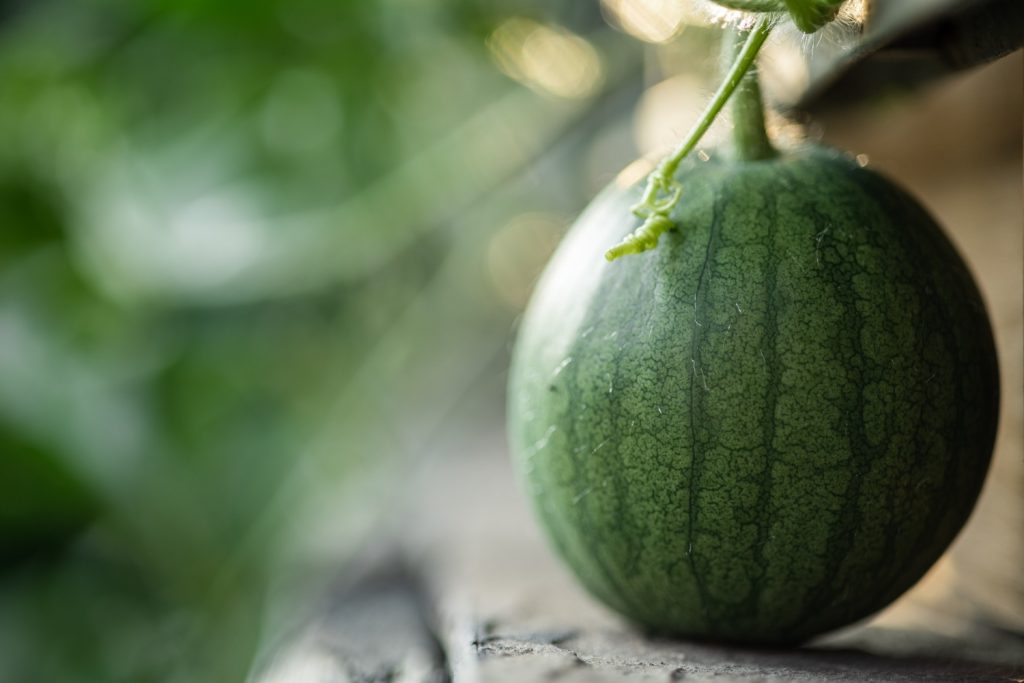
Dahlias
If bringing more butterflies into your garden is your top priority, grow dahlias and zinnias together as a border for your flower beds. Butterflies are attracted to their vivid blossoms and are happy to visit neighboring plants, too, which can dramatically boost pollination rates in your garden.
But, be advised. While dahlias and zinnias can certainly attract pollinators, they may catch the eye of wandering deer, too. Should you notice any hungry foragers nibbling on these flowers, spray them with a homemade dish soap repellent to encourage the animals to find a meal elsewhere.
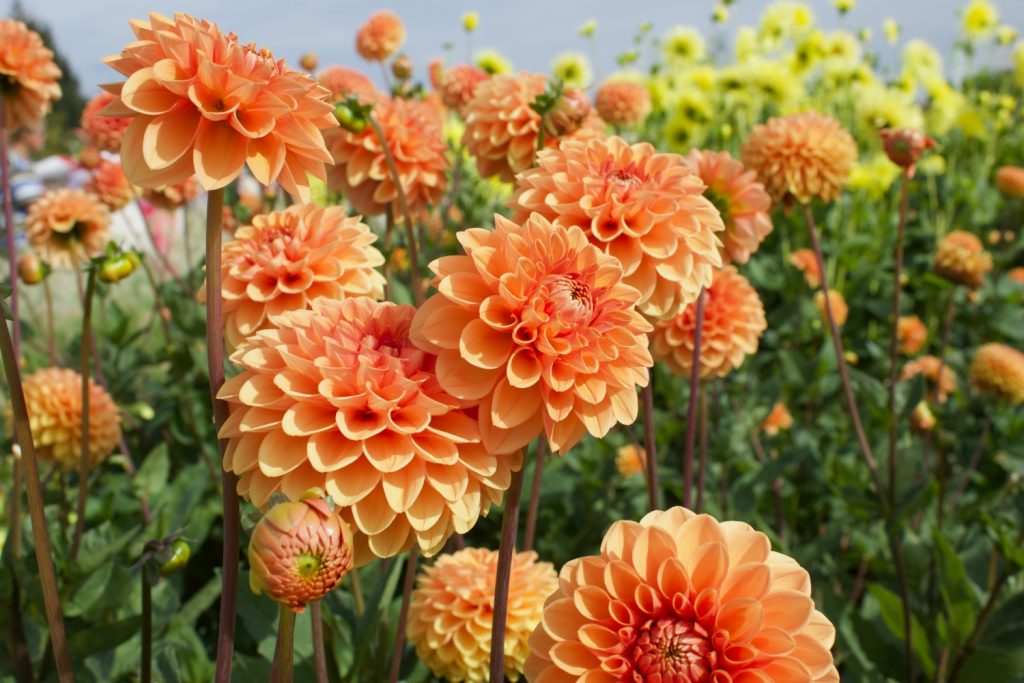
Tomatoes
The average tomato plant can produce upwards of 100 tomatoes in a growing season. Smaller varieties, including Romas and cherry tomatoes, can produce nearly 200 fruits. Tomato plants stay incredibly busy, so they need all of the help that they can get from neighboring plants. Fortunately, zinnias make excellent companions for tomatoes. Their vibrant flowers attract pollinators as well as predatory insects, like hoverflies and parasitic wasps, who feed on the aphids, worms, and beetles that like to prey on tomatoes.
Pro tip: try growing basil, zinnias, and tomatoes within the same raised bed or garden space. Zinnias and basil work together to support the pollination of the tomato plants, while basil helps improve the flavors of the tomatoes.
Beans
Like collard greens, zinnias like to grow near beans thanks to their nitrogen fixation. Beans and other legumes take the nitrogen that’s already in the soil and turn it into a form of nitrogen that’s easier for plants to use. Since zinnias rely on adequate nitrogen levels to bloom, zinnias and beans enjoy a mutually beneficial relationship, as zinnia’s blooms work to attract pollinators needed to help beans reproduce.
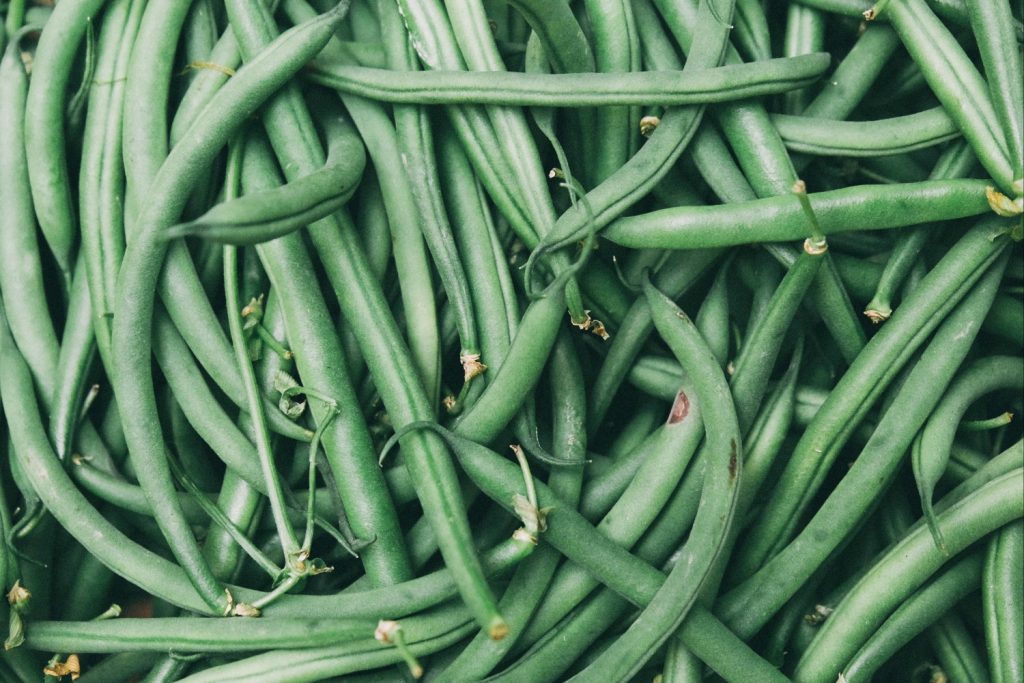
Marigolds
Together, marigolds and zinnias are the dream team when it comes to pest control. All of the harmful bugs that can devastate a garden — aphids, thrips, mites, flies, and beetles — are repulsed by the marigold’s pungent smell. Of course, zinnias don’t smell too good to insects, either.
But, as bad as marigolds and zinnias smell to the wrong bugs, these flowers are downright irresistible to the right ones. Butterflies, in particular, are drawn to these flowers thanks to their vibrant, easy-to-spot blooms.
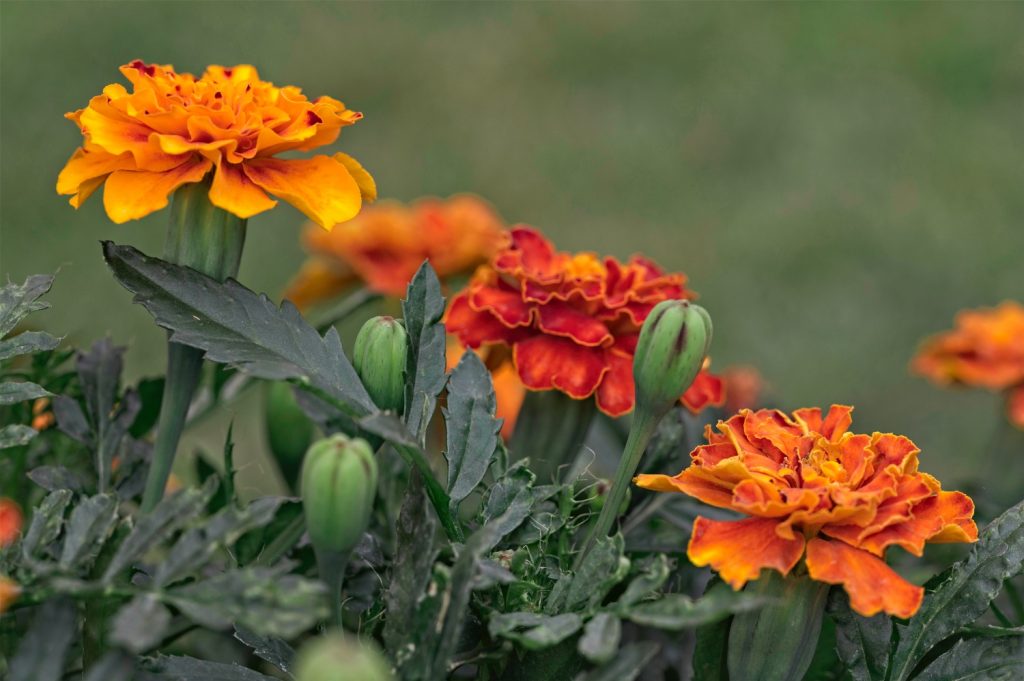
Peppers
Whether you grow banana peppers or ornamental varieties, all types of peppers can be utilized as zinnia companion plants. Peppers benefit from zinnia’s ability to attract pollinators. Just be careful about which varieties you choose. Some zinnias can grow up to 4 feet tall, and can quickly overshadow your pepper plants. So only use dwarf varieties of zinnias as neighbors for your pepper plants, which top out at around 12 inches.
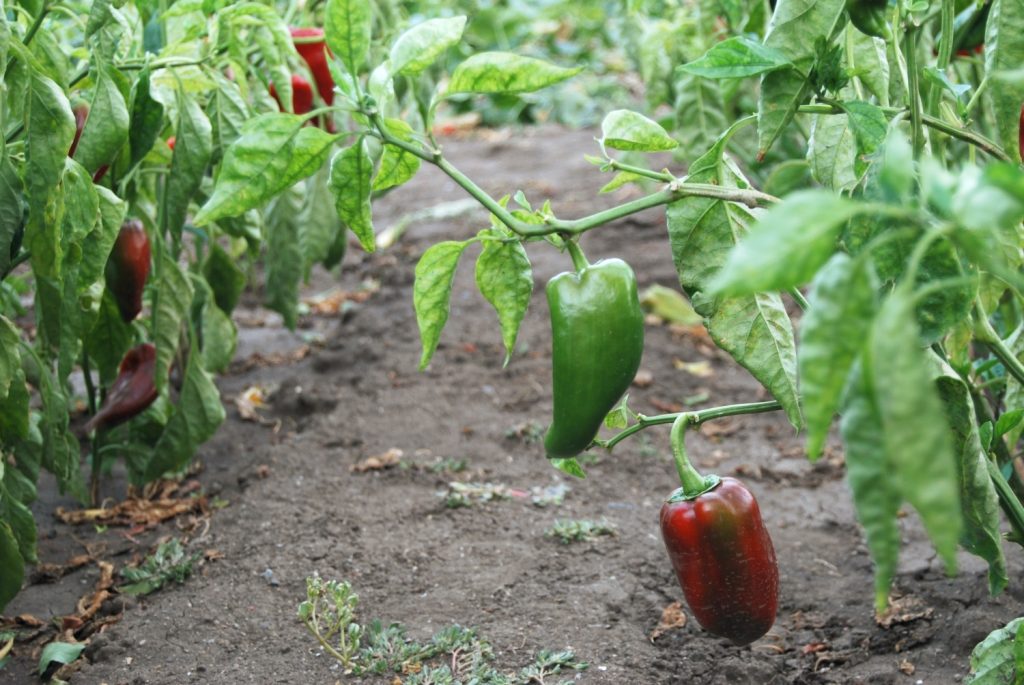
Asparagus
Asparagus seeds can take a long time to germinate. Up to three years, to be exact. And the very last thing you want, once they sprout up, is to see them fall prey to bugs. Growing zinnias near your asparagus will help repel harmful insects. But it also allows the zinnias to act as a trap crop for the beetles, worms, and flies that like to nibble on asparagus plants.
Alternate rows of asparagus in between rows of zinnias to draw insects away from your veggies. You can also use zinnias as a border around your asparagus plants, which is especially helpful if you’re gardening in raised metal beds.
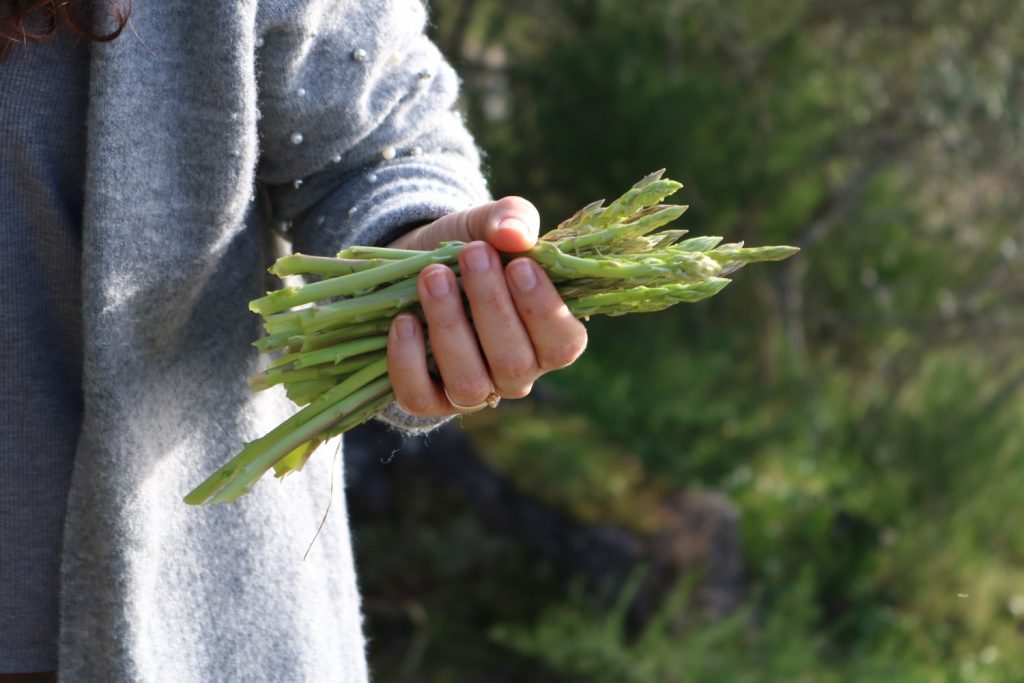
Kale
A nutritious garden veggie that’s much easier to grow than you might expect, one of the major pitfalls that kale can run is insect infestation. Harlequin beetles, whiteflies, and cutworms can quickly prove to be devastating to young kale plants. Even mature kale plants aren’t immune to these insects. But zinnias support kale throughout its various growth stages by attracting predatory insects that will work to protect your kale from pests so you have plenty to harvest for yourself later on.
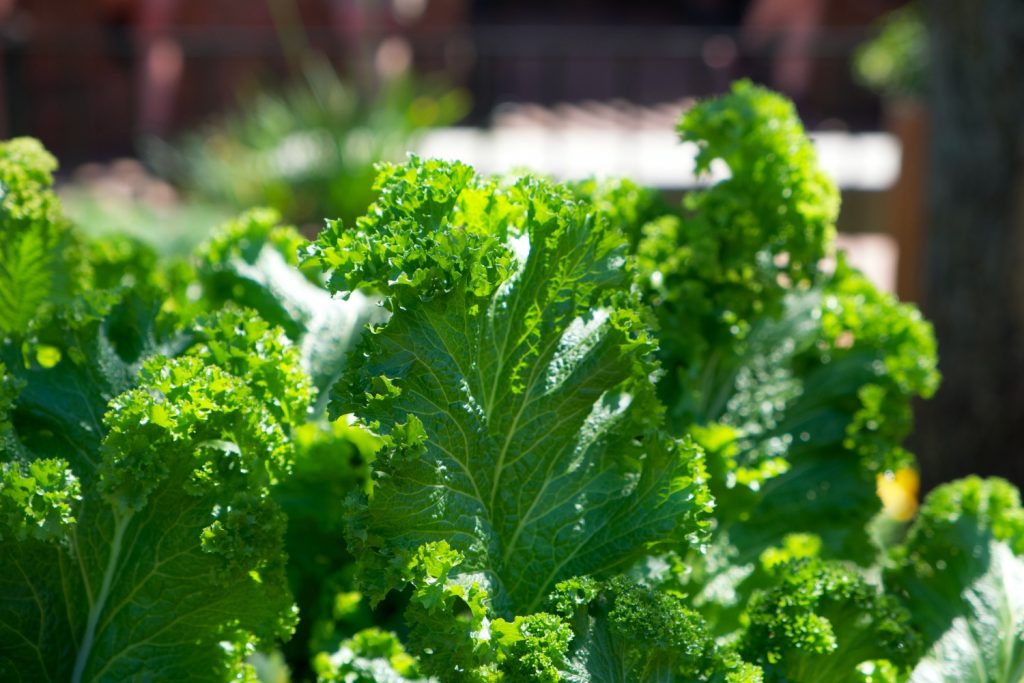
Black-eyed Susans
If you’re trying to bring local pollinators to your backyard by planting more native plant species, consider growing black-eyed Susans as a zinnia companion plant. Both of these species have open-face flowers, so they give hungry bees and butterflies a place to rest and warm up while they feed (although, butterflies can also shake to increase their body temperature if they need to).
Plus, both black-eyed Susans and zinnias can be grown in full sun. Plant rows of zinnias in between rows of black-eyed Susans for a more manicured appearance, or scatter seeds randomly together with red sunflowers to create a natural effect.
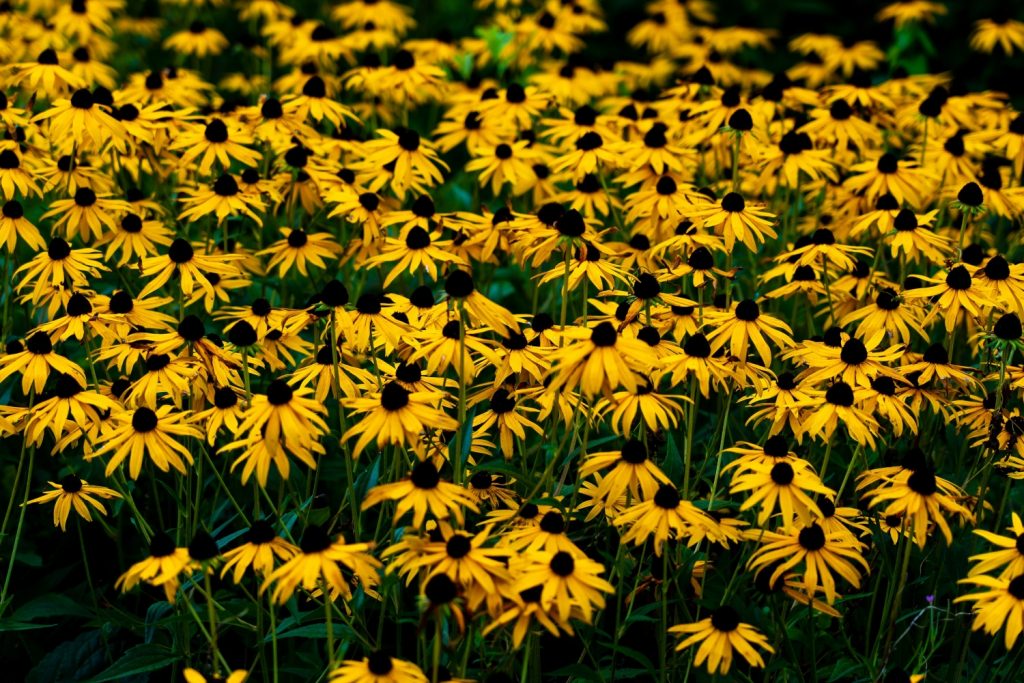
Which plants should you avoid growing near zinnias?
Not all plants get along with zinnias. When planning your garden for the upcoming growing season, be sure to avoid growing the following plant as zinnia companions.
Lavender
Fragrant and elegant, lavender can be tremendously helpful in attracting pollinators, especially when it’s grown as a low hedge around the perimeter of your garden. Unfortunately, because lavender grows best in dry soils, it may not grow well when planted near zinnias, which prefer moist soils. While zinnias are tolerant of occasional overwatering, lavender is prone to developing root rot when the soil stays damp for too long. So, for best results, plant these two beauties on different sides of your garden.
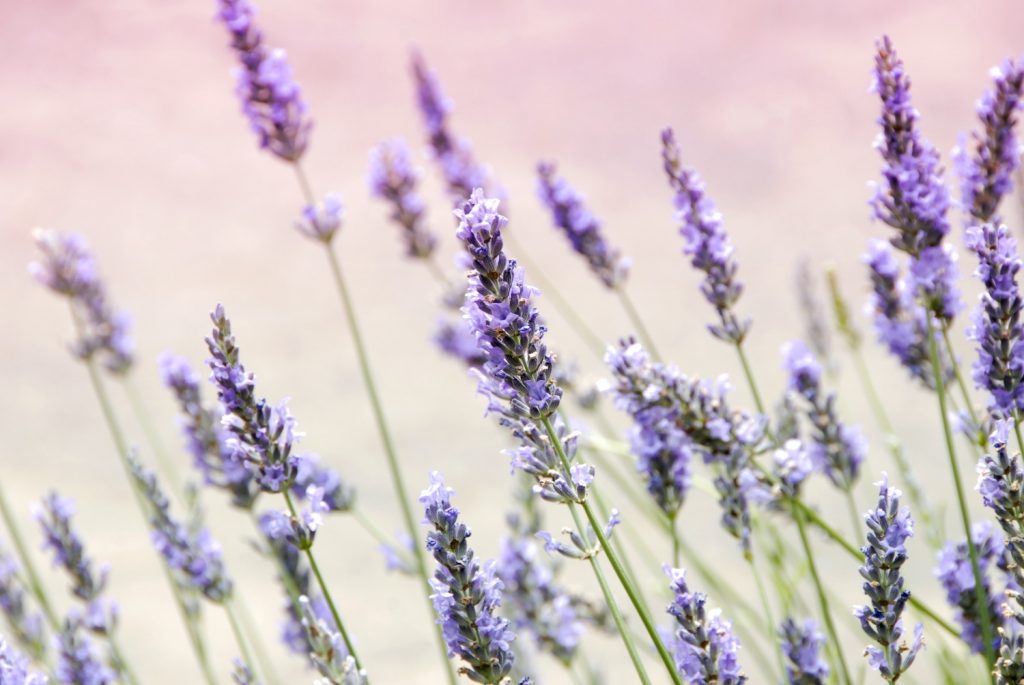
Rosemary
Rosemary is native to the Mediterranean region, where it thrives in full sun and arid conditions. But because rosemary also prefers to grow in dry soils, it may not have what it takes to survive next to zinnias. Although both of these plants can help draw local pollinators, they don’t perform very well when grown together.
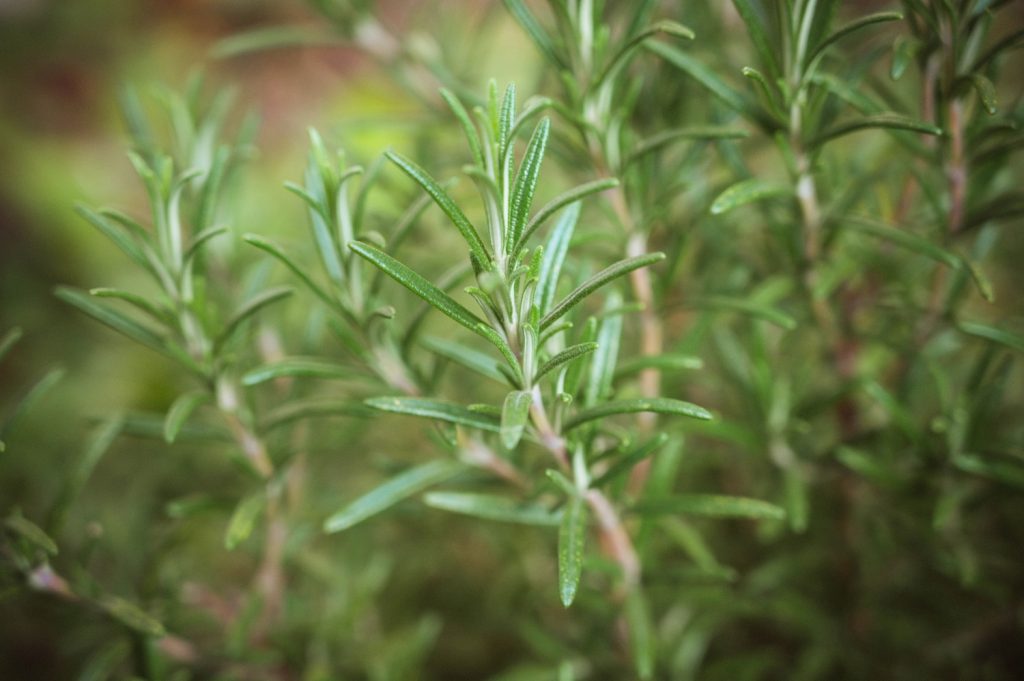
Thyme
Easy to propagate and even easier to care for, thyme is a fast-growing ground cover that doesn’t need much attention. This herb’s preference for dry soils means it won’t thrive when planted near zinnias. But you should still consider keeping this culinary favorite in your garden thanks to its ability to repel harmful insects, including whiteflies.
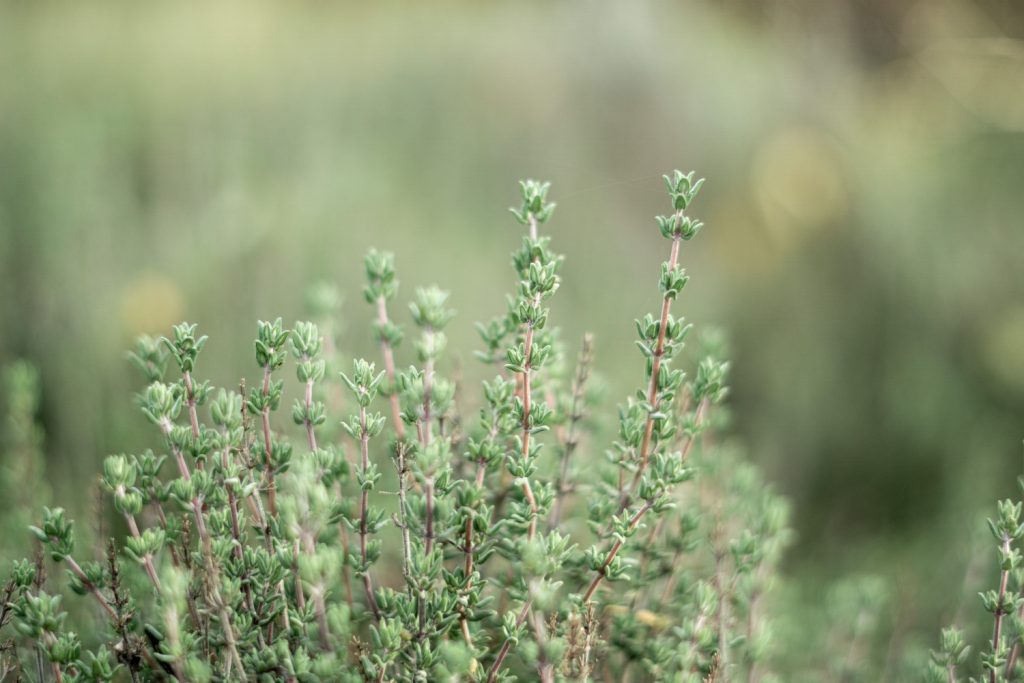
Is growing zinnia companion plants worth all the trouble?
If you’ve had trouble with insect infestations and crop production due to a lack of pollinators, then planting zinnias is well worth the time and effort. Although companion planting takes more work initially, it cuts down on labor in the long run. So do yourself a favor and include zinnias in your vegetable patch and landscaping. Your plants will thank you — and so will your local wildlife!
